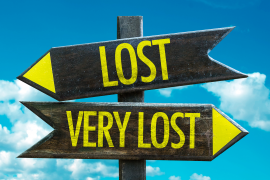I am a huge fan of collaboration – as a set of skills, and a process, it’s one of the best ways to generate innovative and unexpected approaches and ideas (1), and, as a process in which learning and knowledge-making is created through participation (Laurillard, 2012, p187), it supports active learning. Collaboration can be creative, instructive and fun. It can also be messy and inefficient in all the best ways, as its vital processes of listening and taking time to understand complexities and perspectives, and engaging in discussion, debate and experimentation, prevent an unhelpful (or even detrimental) rush to premature solutions.
At Sydney, collaboration is linked with our Graduate Qualities, and features in curricula in the form of group projects. While this inclusion is directed by policy (2), and is recognised as a productive mode of learning (Chickering & Gamson, 1999, p76; Laurillard, ibid, p187–188), the mention of group work can elicit polarised responses from students. And for good reason – many teachers and students have experienced group work as a confusing and frustrating undertaking in which guidance on the process is scant, conflict derails productivity, work is divided unevenly, or the purpose for a project being run as group work is unclear.
To the many useful Teaching@Sydney articles on collaboration (including encouraging collaborative learning, supporting online group work, and insights from students), I’d like to add a contribution on setting up group work for success by helping create the conditions for cohesive groups and productive collaborative processes.
Laurillard (ibid, p188) notes the importance of process to learning through collaboration, and highlights its interpersonal aspects: “The group is valuable to each of its members because it makes demands on them to produce a contribution to the group goal. In the process of doing so the learner has to construct an idea, explanation, or description. This idea is then available to the others to challenge or modify, and for the originator to defend or redevelop. Each member of the group reciprocates the demands and contributions of the others” (ibid, p189). These process-based, interpersonal, and group-member mediated learning features of group work have useful parallels in psychotherapeutic group work, in which the aim is for a group to function as a resource for itself, with group members working together to advance the aims of the group. Such team-centric self-sufficiency is made possible by group cohesiveness, a feature which leading scholar, psychiatrist and practitioner of psychotherapeutic group work, Professor Irvin Yalom (1985, p55–56) notes as being related to elevated “risk taking, empathic listening, and feedback” – all productive skills for working on a team project.
Yalom delineates several factors which contribute to the success of groups, and drawing from a selection of these gives us three simple ideas to introduce to learning environments to support collaboration.
Inspiration from Yalom’s therapeutic factors
Instillation of hope
Set a positive foundation by expressing confidence in the benefits of collaborative learning, highlighting the support for collaboration included in your unit (such as good learning design and clear guidance, rapport-building activities, team charters, work-in-progress presentations for class and teacher feedback, formal or informal peer review, and supportive milestone checks), and providing helpful resources (see ‘Additional resources for students’ below for some examples).
Universality
Create common ground by acknowledging the unique challenges and opportunities of collaboration, sharing your own experiences, and facilitating students and the teaching team to do the same. Allow time for this process as part of introducing group projects, in order to emphasise the importance of listening, hearing and together finding ways to share understanding.
Interpersonal learning
Model collaboration in your interactions with students and the teaching team (demonstrating respectful engagement, listening skills (including the contribution of silence to collaboration (Remedios et. al., 2009, p15-16)), openness to different perspectives and new ideas, and productive handling of conflict), and encourage participants to share their skills and learn from each other’s approaches; collaboration as a chance for team members to move from reenacting their usual role, such as ‘the one who does all the work’, and try new ways of working with others.
There’s no template for teamwork
All teams are unique and develop their own processes of collaboration. These processes are an essential part of the learning experience, as Laurillard (ibid, p187) notes, “while the output is important as a principal driver of the learning cycle, the process is what makes the learning happen”. By supporting students to establish, nurture and value their team (not just its output), we can help them enjoy successful and satisfying collaborations which enhance their skills, connections and confidence.
Additional resources for teachers
- Collaborative learning resources for staff Canvas site
- MPLF Module 10.1 Enhancing group work
- Hear from educator James M Lang about the importance of supporting group work, which also includes a link to the University of Minnesota’s Faculty Guide to Team Projects
- Read about a Sydney study on the benefits to teams of autonomy
- Learn about Pixar’s unique creative collaborative processes which emphasise the importance of trust, respect and community
Additional resources for students
- Orientation and tips in this five minute video from UBC
- Group work tips from Sydney
- More detailed guidance on group work from UTS and WSU
- Sydney’s ‘Group work: Collaborative Learning resource‘ on Canvas
- Sydney’s Student Charter 2020
1 Four examples of innovative interdisciplinary collaboration:
- Feral Atlas – deliciously creative interactive atlas of the entanglements of ecologies, life forms and human infrastructure projects. Curated and edited by Anna L. Tsing, Jennifer Deger, Alder Keleman Saxena and Feifei Zhou.
- ENO Breathe – seeking ways to use their resources when Covid limited live events, the English National Opera approached some respiratory physicians to see if they could help sufferers of long Covid improve their symptoms – the resulting program was rolled out nation-wide.
- Collaboration on bushfire – collaboration between tech, infrastructure and community with a bold proposal to detect and extinguish bushfires within minutes of ignition.
- Spiderweb music – exploring structures through sound for multispecies communication and novel protein composition.
2 The University’s Learning and Teaching Policy 2019 states that, “19. (1) The curriculum framework for new and revised undergraduate awards must include … (c) collaborative and group-based learning activities and assessments”
Chickering, A. W., & Gamson, Z. F. (1999). Development and Adaptations of the Seven Principles for Good Practice in Undergraduate Education. New Directions in Teaching and Learning (80, Winter), 75–81.
Laurillard, D. (2012). Learning Through Collaboration. In Teaching as a Design Science: Building Pedagogical Patterns for Learning and Technology: Routledge, Taylor & Francis Group.
Remedios, L. , Clarke, D. , & Hawthorne, L. (2008). Framing Collaborative Behaviors: Listening and Speaking in Problem-based Learning. Interdisciplinary Journal of Problem-Based Learning, 2(1).
Yalom, I. (1985). The theory and practice of group psychotherapy. New York: Basic Books.





